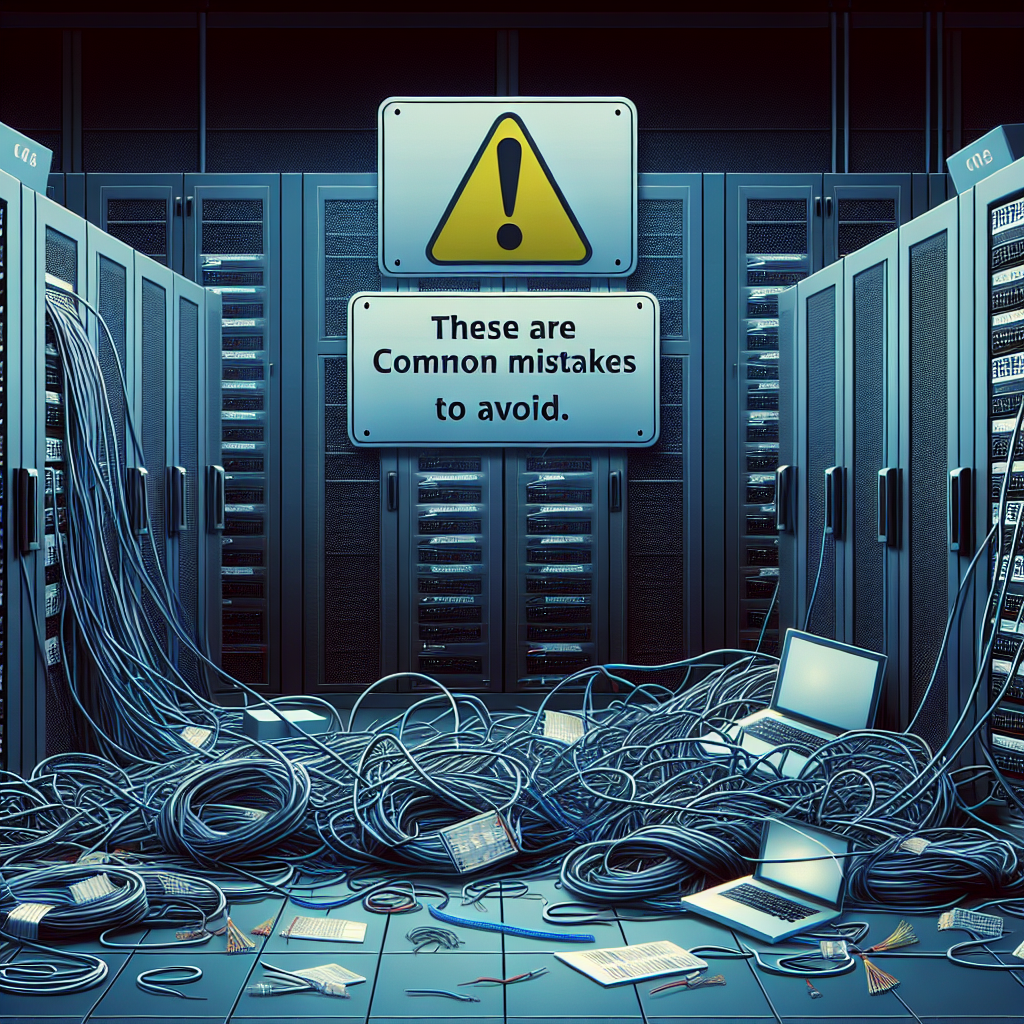In today’s digital age, data centers are the backbone of businesses, serving as the central hub for storing, processing, and managing data. Proper cabling in data centers is crucial to ensure smooth operations and prevent downtime. However, many organizations make common mistakes that can lead to inefficiencies and potential risks. In this article, we will discuss some of the common mistakes to avoid in data center cabling.
1. Lack of Planning: One of the most common mistakes in data center cabling is a lack of proper planning. Before starting any cabling project, it is essential to have a detailed plan in place that outlines the layout, cable types, and connections. Failure to plan can result in a disorganized and messy cabling system, making it difficult to troubleshoot issues and maintain the infrastructure.
2. Overcrowded Cable Pathways: Another common mistake is overcrowding cable pathways with too many cables. This can lead to cable tangling, strain on connectors, and difficulty in accessing and tracing cables. It is important to leave enough space in cable trays and pathways to allow for proper airflow and easy access for maintenance.
3. Using Incorrect Cable Types: Using the wrong cable types can lead to performance issues and potential data transmission errors. It is crucial to use the appropriate cables for specific applications, such as fiber optic cables for high-speed data transmission and twisted-pair cables for Ethernet connections. Additionally, using outdated or low-quality cables can result in signal degradation and reduced network efficiency.
4. Poor Cable Management: Proper cable management is essential to maintain a neat and organized cabling system. Without proper cable management, cables can become tangled, damaged, or disconnected, leading to downtime and costly repairs. It is important to use cable management tools such as cable ties, racks, and labels to keep cables organized and easily identifiable.
5. Neglecting Cable Testing: After installing cables, it is crucial to perform thorough testing to ensure that they are properly connected and functioning correctly. Neglecting cable testing can result in undetected faults or performance issues that can disrupt operations and lead to data loss. Regular testing and maintenance of cables are essential to prevent potential issues before they escalate.
6. Ignoring Future Scalability: Data centers are constantly evolving to accommodate growing data needs and technological advancements. Ignoring future scalability when designing cabling infrastructure can lead to costly upgrades and downtime in the future. It is important to consider future expansion and technology upgrades when planning cabling layouts to ensure that the infrastructure can easily adapt to changing requirements.
In conclusion, avoiding common mistakes in data center cabling is essential to ensure a reliable and efficient infrastructure. Proper planning, cable management, and testing are key factors in maintaining a well-organized and functional cabling system. By addressing these common mistakes and implementing best practices, organizations can minimize risks and maximize the performance of their data center cabling infrastructure.


Leave a Reply